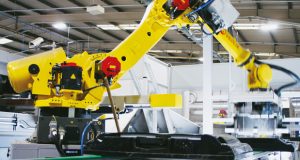 FM’s that want to properly manage their work at height risk must consider competency alongside the required task and the safety equipment being provided, argues John Hynes, Head of Safe Access, Fixfast
FM’s that want to properly manage their work at height risk must consider competency alongside the required task and the safety equipment being provided, argues John Hynes, Head of Safe Access, Fixfast
Tougher sentencing guidelines from the Sentencing Council mean facilities managers are under even more pressure to effectively manage the risks of work at height on their premises. The Health and Safety Executive is increasingly proactive, with larger fines and harsher prosecutions for duty holders not meeting their responsibilities.
One of the factors that most influences the probability of an incident occurring is the competence of the individuals undertaking the job. Facilities managers must ensure the person carrying-out a task is competent for both the task, and their use of the access and protection systems for that location.
But there are currently no standards for defining levels of competence. This is partly because competence in a specific task is dependent upon not just skill level, but also training and experience in using the safe access equipment provided. Competence for the task must not be confused with competence to work safely at height.
FMs are expected to exercise good judgement, and factor in the means of access and protection alongside the required skills when determining competence. Someone who is competent at cleaning gutters on one roof accessed by a caged ladder, may not be competentent if that same task requires a cherry picker or fall arrester on another roof.
 Taking a more considered view of work at height competence can in fact pay dividends. Costs can be reduced by avoiding expensive over-competence. Using over qualified staff mean maintenance budgets are stretched further than they should be. By optimising safe access with competency levels, savings can be made.
Taking a more considered view of work at height competence can in fact pay dividends. Costs can be reduced by avoiding expensive over-competence. Using over qualified staff mean maintenance budgets are stretched further than they should be. By optimising safe access with competency levels, savings can be made.
So matching worker competency with the access method provided, is more than just safety critical – it can be commercially beneficial. We have created a four-tier system to make this simple.
A work at height Novice has no experience working at height – such as a typical office worker. These individuals should not work in maintenance areas at height under any circumstances.
Those with a Basic level of competence have limited experience working at height. They only occasionally work at height, in a narrow range of scenarios, but have received training in working at height safety. Importantly, they should have evidence of this, and be able to prove their experience in working with the access system to be used on site. Examples of workers who generally meet the basic level of competence are HVAC maintenance contractors and facilities technicians.
A worker with Advanced competence has a far greater range of experience than those in the basic category. They have worked in a range of at-height scenarios and do so regularly. They will not be limited to one means of access, as they are competent in the use of multiple systems and have evidence of this. An advanced worker will have had years of experience and are very much aware of the hazards of work at height. Roofing contractors and experienced FMs will fall into this category.
The Expert competence level is reserved for those considered height safety specialists. These workers spend every day working at height and can make themselves safe in almost any situation – skills which are unlikely to be held in-house. They have a vast array of qualifications, including specialist certifications, and can provide logbooks detailing regular updates for maintaining them. Often, these specialists are members of a trade association which sets stringent standards on member competence. IRATA-certified Rope Access Technicians are the most common example of workers with Expert competence.
The legal duties imposed on FMs are more numerous than ever before – so a good grasp of competence is vital. FMs should start by thinking about the competence of the individuals in the facilities management team, and of those contractors likely to be appointed to perform predictable tasks in the future. By understanding the work at height competence of these individuals, FMs can take action to improve the means of access on their premises. In turn, this ensures systems are appropriate for the full range of work required – for example, by installing permanent fixed access solutions such as caged ladders.
More than that, undertaking this proactive assessment will also provide a useful foundation for future risk assessments and work orders. And keeping a record of this assessment will allow a facilities manager to demonstrate that adequate consideration has gone into making safe provision in a reasonably practicable way, in line with their duties. Put simply, understanding competence is the route to safer, more cost-effective compliance.
 An asset management company, its director and a self-employed contractor were sentenced after a gardener working on a roof died by falling through a rooflight. The deceased had not received sufficient training for work at height on the specific roof involved. The company was fined £20,000, and both the director and contractor were given suspended prison sentences of four and six months respectively. The judge presiding over the case stated, those responsible ‘should have recognised he was not competent and should not have carried out the work.’
An asset management company, its director and a self-employed contractor were sentenced after a gardener working on a roof died by falling through a rooflight. The deceased had not received sufficient training for work at height on the specific roof involved. The company was fined £20,000, and both the director and contractor were given suspended prison sentences of four and six months respectively. The judge presiding over the case stated, those responsible ‘should have recognised he was not competent and should not have carried out the work.’




